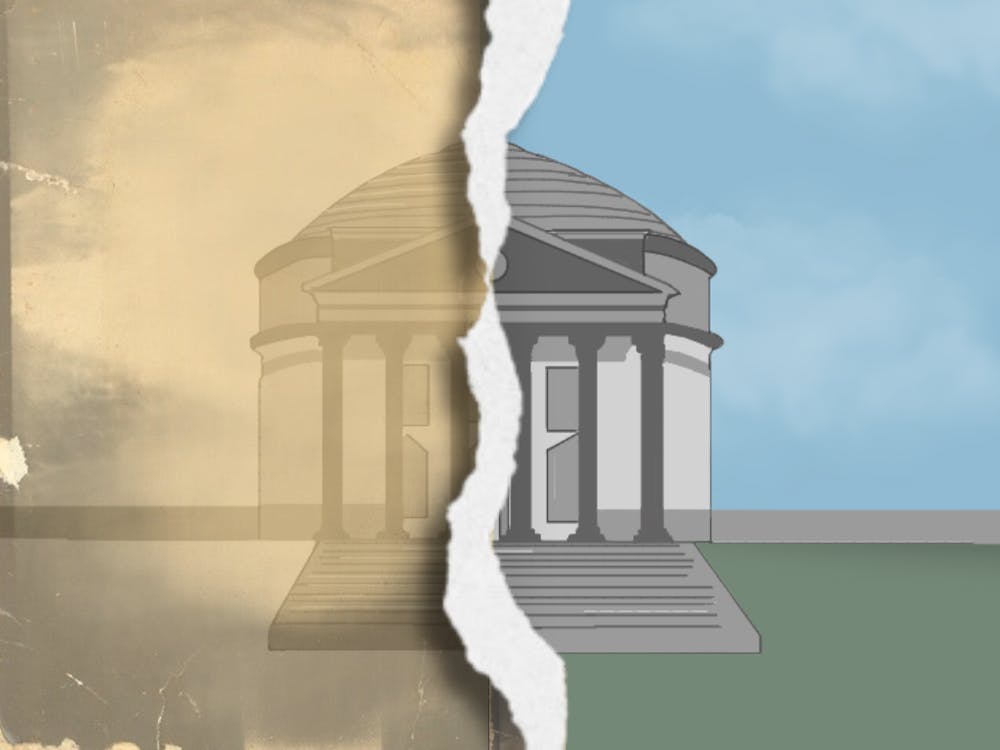ONE BILLION dollars is a lot of money. The fact that the University has surpassed its $1 billion goal for the Capital Campaign is a huge achievement. Yet even $1 billion -- much of which remains in an investment fund -- can't pay for everything the University wants.
Chief Operating Officer Leonard W. Sandridge's job actually may become more difficult with all this money. With everyone clamoring for a share, it's tempting to use the money for flashy pursuits. The University, however, must take into account what will matter in the long run. The administration should use as much money as possible to increase the quality of older buildings and everyday operations at the University.
President John T. Casteen III and Vice President for Development Bob Sweeney deserve praise for anticipating a drop in state funding and the fundraising campaign that grew out of that foresight. As of early 1999, the University had a total endowment of $1.4 billion, ranking 25th in the nation ("Endowments Earned 11 percent in 1999," The Chronicle of Higher Education, Feb. 18). By garnering an additional 1 billion dollars, the Capitol Campaign has proven a success.
|
The distribution of this money, however, is more uneven than trickledown economics. A list of planned facility improvements ("Officials use fundraising engine in effort to eclipse rivals," The Cavalier Daily, April 19) mentions the Law School, Darden and the University library system, but very little for the main Arts and Sciences buildings. Besides, most of what is planned is contingent on the University matching funds, such as the $10 million for Environmental Sciences cited by Arts and Sciences Development Officer Ken Kipps.
Yet anyone can see that the older buildings, especially New Cabell Hall, which itself is one of the newer College buildings, could use some work. Even though nothing newsworthy goes on there, almost all students have classes in the 50-year-old building at some point. Besides, when prospective students come to visit, they don't visit the Law School. Most of them go to class in New Cabell with first-year students. It doesn't make a good impression when there's no air conditioning, the desks have carved graffiti from the Carter administration, or have broken apart altogether. A building that serves so many people should not be in this dilapidated condition.
Much of the allocation of the Campaign money, of course, comes from the specification of donors. Certain donors inevitably will have specific places to put their money, and that's their prerogative. For example, Darden alumni generally will give more for plans specific to the business school. The top 10 rating of the Law School probably encourages donors to give because it's so prestigious. The University shouldn't turn down these offerings just for the sake of equity. But a good portion of this money -- $50 million -- remains unrestricted ("Officials use fundraising engine in effort to eclipse rival." Cavalier Daily, April 19. The University should make an effort to increase the unrestricted portion in order to renovate existing buildings.
In the long run, well-managed operations -- not flashy, cutting edge programs -- will maintain the University's reputation. Arts and Sciences Dean Melvyn P. Leffler admits that "we still have absolutely compelling needs," (The Cavalier Daily, April 19), including more support for graduate students and faculty.
When the University brings wish lists to donors, it needs to include plans for renovating older buildings besides the Academical Village. Of course, the biggest givers may be turned off by a general renovation plan they can't name after themselves. But the University can develop plans for new wings, or put programs such as language labs or tutoring centers in the existing building to give the alumni something tangible. Besides, the University has raised money for the Pavilions without renaming them.
By the same token, the University can improve its operations by finding ways to make funding graduate students and faculty more appealing. For smaller donors, funding something concrete may not be as important, and so they might be persuaded to donate to such causes as subsidized health insurance.
The University has made great progress in its fundraising, and all schools, including the College, will benefit. However, much more needs to be done. Everyday operations may not be as exciting as a new investment center or new athletic facilities. About 65 percent of our donor base, however, is alumni or friends of the University, who surely know about its everyday problems ("Officials use fundraising engine in effort to eclipse rival." Cavalier Daily, April 19). If properly persuaded, then they would most likely be willing to contribute to ameliorate the eyesore that mars Jefferson's Academical Village.
(Elizabeth Managan's column appears Tuesdays in The Cavalier Daily.)






